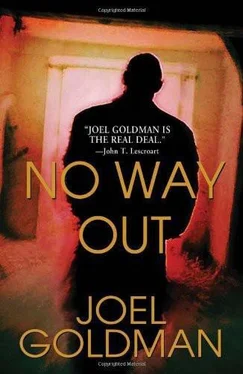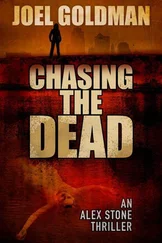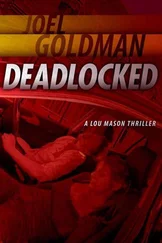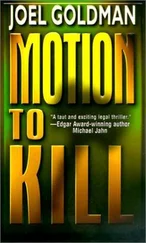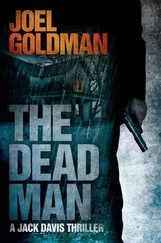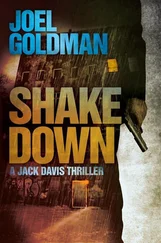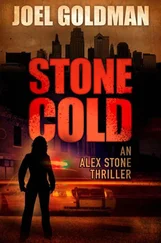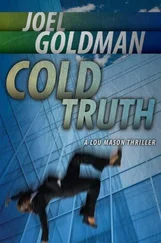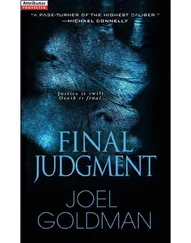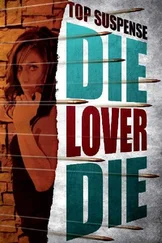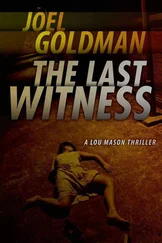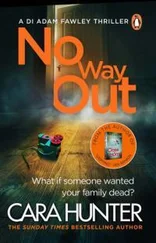Joel Goldman - No way out
Здесь есть возможность читать онлайн «Joel Goldman - No way out» весь текст электронной книги совершенно бесплатно (целиком полную версию без сокращений). В некоторых случаях можно слушать аудио, скачать через торрент в формате fb2 и присутствует краткое содержание. Жанр: Триллер, на английском языке. Описание произведения, (предисловие) а так же отзывы посетителей доступны на портале библиотеки ЛибКат.
- Название:No way out
- Автор:
- Жанр:
- Год:неизвестен
- ISBN:нет данных
- Рейтинг книги:5 / 5. Голосов: 1
-
Избранное:Добавить в избранное
- Отзывы:
-
Ваша оценка:
- 100
- 1
- 2
- 3
- 4
- 5
No way out: краткое содержание, описание и аннотация
Предлагаем к чтению аннотацию, описание, краткое содержание или предисловие (зависит от того, что написал сам автор книги «No way out»). Если вы не нашли необходимую информацию о книге — напишите в комментариях, мы постараемся отыскать её.
No way out — читать онлайн бесплатно полную книгу (весь текст) целиком
Ниже представлен текст книги, разбитый по страницам. Система сохранения места последней прочитанной страницы, позволяет с удобством читать онлайн бесплатно книгу «No way out», без необходимости каждый раз заново искать на чём Вы остановились. Поставьте закладку, и сможете в любой момент перейти на страницу, на которой закончили чтение.
Интервал:
Закладка:
“Are you saying you don’t think he killed them?”
“I’m saying I don’t know why seeing pictures of his children made him happy at first and then made him angrier than when I tried to deceive him into thinking his children were dead. I don’t know what that means.”
“There’s one other thing you’re overlooking.”
“What’s that?”
“When you showed him the picture of the bodies, he said that they weren’t his kids. He didn’t say that they couldn’t be his kids because they weren’t dead. That’s what I would have said if I were him and I hadn’t killed my son and daughter.”
My cell phone pinged with a text message. It was from Lucy. I read it and shook.
“What is it?”
“One of the volunteer search teams looking for Evan and Cara found something in Kessler Park.”
“What?”
“Remains.”
Chapter Twenty-five
Kessler Park stretches along the northern edge of Northeast Kansas City, beginning near the intersection of The Paseo and Independence Avenue on the west and continuing east to the intersection of Gladstone and Belmont, a rambling, undulating green border covering more than four miles. Built beginning in the 1890s as the first of the city’s ten thousand acres of parks, many of its hilly and hardscrabble wooded areas remain hard to reach. Drug dealers and prostitutes long ago replaced families out for a Sunday horse and buggy ride, plying their trade in after-dark seclusion, turning indifferent eyes to the stolen cars and dead bodies dumped and buried in the park’s shadows.
Cliff Drive snakes through the park past the Kansas City Museum, edging along limestone bluffs overlooking the Missouri River, continuing past North Terrace Lake, the Carl DiCapo Fountain, a disc golf course, and Indian Mound, a Native American gravesite. The city and local neighborhood associations have fought to reclaim the park, closing Cliff Drive to motor traffic on weekends and cracking down on illegal activity. But the park is too big, too rugged, and too thick to be tamed by traffic engineers and irate homeowners.
Lucy’s text message had said to meet her at North Terrace Lake, an irregular-shaped pond in the center of a broad, grassy basin set below street level. Cliff Drive, Chestnut Trafficway, and Lexington Avenue bordered the lake on three sides, a widening stand of thick trees and tangled underbrush rising behind the lake across the face of a steep slope. The grass was stunted, stained dull beige, ready for winter, the trees half-stripped of their leaves, those hanging on, dry, brown, and frail.
We parked on Cliff Drive at the end of a line of police cars. Two clusters of people, fifty feet apart, were gathered on the near side of the lake along a bike path. The sun was overhead, the air crisp but not cold enough to force them to huddle together for warmth though they stood hunched shoulder to hunched shoulder, larger rings circling smaller ones, a lone woman at the center of each group.
Standing on the side of the road and looking down at the lake, I recognized Peggy Martin as the solitary woman in the group farther from us. She shuffled her feet, strained to see over the heads blocking her view, and then dropped her chin, eyes on the ground, repeating the routine again and again. Even at a distance, one thing was certain. She wasn’t cold, and the people around her weren’t there to keep her warm. She was scared, and they were protecting her.
The police had established a perimeter along the outer edge of the distant trees, stretching yellow crime-scene tape trunk to trunk. A uniformed cop held the leash on a search dog, the German shepherd lying at his feet, ears pricked, tail slapping the hard ground with an impatient beat.
The woods were too thick to see what was going on inside the tape, but I knew that a forensics team was spooning away dirt and rock until whatever had been found could be identified as human and a preliminary assessment of gender and approximate age could be made. If the remains were human, they would be excavated with painstaking care, each bone and bone fragment photographed, location and position recorded, the surrounding soil sifted for clothing, bullets, and anything else that would help identify the victim and cause of death. Once the remains were tagged and bagged, the investigation would fan out in widening circles searching for more evidence.
That’s when someone would emerge from the trees and talk to the women who were waiting inside their friendship circles, too afraid of answers to ask questions. What did they find? Could it be my son, daughter, sister, brother, father, mother? Who did this?
A television news chopper hovered overhead, rotors thumping. Remote broadcast vans, satellite dishes aimed skyward, jockeyed for position as two cops directed them to a staging area. A reporter, trailed by a cameraman, approached Peggy’s circle and was rebuffed. She shrugged, signaling to the cameraman to follow her to the other group, where she found someone anxious to make the six o’clock news.
Kate and I walked down the slope from Cliff Drive toward the bike path, our route taking us past the group that welcomed the reporter. One of the women was holding a copy of the flier I’d seen tacked to the light pole on Independence Avenue near Roni Chase’s office. I couldn’t see the picture on it, but I could make out Timmy Montgomery’s name. Several other women were wearing sweatshirts screen-printed with a logo that read Have You Seen Me? and Timmy’s image.
The woman in the center of that circle had been waiting two years for the answers to her questions. A crack opened in the wall her friends had built around her. She was staring at the ground, rocking back and forth and hugging her body. Her hair was pulled back, her face pale and flat. A man elbowed his way toward her, hands outstretched, calling her name, “Jeannie!” She twisted away without looking at him. He dropped his hands and melted into the crowd.
“Do you think this will be the day?” Kate asked.
“For what?”
“When God decides to ease her pain.”
“You think that’s how it works?” I asked.
“I hope so.”
“I don’t think God is going to choose between these two mothers.”
“You think it’s just a matter of luck, then?”
“I don’t believe in luck, good luck, bad luck, or no luck at all.”
“What do you believe in?” Kate asked.
“A world where everyone takes his turn in the barrel.”
“Maybe they’re both in the same barrel.”
“What do you mean?”
“Maybe the disappearances of their children are related. Maybe the same person is responsible.”
We stopped, both of us looking back and forth at the two groups and the two women at their center. Adrienne Nardelli, the detective in charge of Peggy Martin’s case, hadn’t said anything about possible links to other cases when Lucy and I met with her. We were too focused on Jimmy Martin to have asked, making the mistake of seeing the world through our client’s eyes instead of following the evidence wherever it led us.
“Maybe.”
Lucy waved to us from the edge of the second group, and we joined her.
“How’s Peggy?” I asked.
“Holding up, but only barely.”
“What have you found out?”
She pointed toward two people standing apart from the group. “That’s Ellen Koch, Peggy’s neighbor, the one who organized the volunteer search teams. The guy is her son, Adam. This area had been searched a couple of times, but Ellen decided to give it another try today. She brought her son and a few other people with her. She and Adam were up in the woods above the lake and stumbled across something that looked like a bone, and Ellen called the police.”
“Did you talk to the son?”
Читать дальшеИнтервал:
Закладка:
Похожие книги на «No way out»
Представляем Вашему вниманию похожие книги на «No way out» списком для выбора. Мы отобрали схожую по названию и смыслу литературу в надежде предоставить читателям больше вариантов отыскать новые, интересные, ещё непрочитанные произведения.
Обсуждение, отзывы о книге «No way out» и просто собственные мнения читателей. Оставьте ваши комментарии, напишите, что Вы думаете о произведении, его смысле или главных героях. Укажите что конкретно понравилось, а что нет, и почему Вы так считаете.
